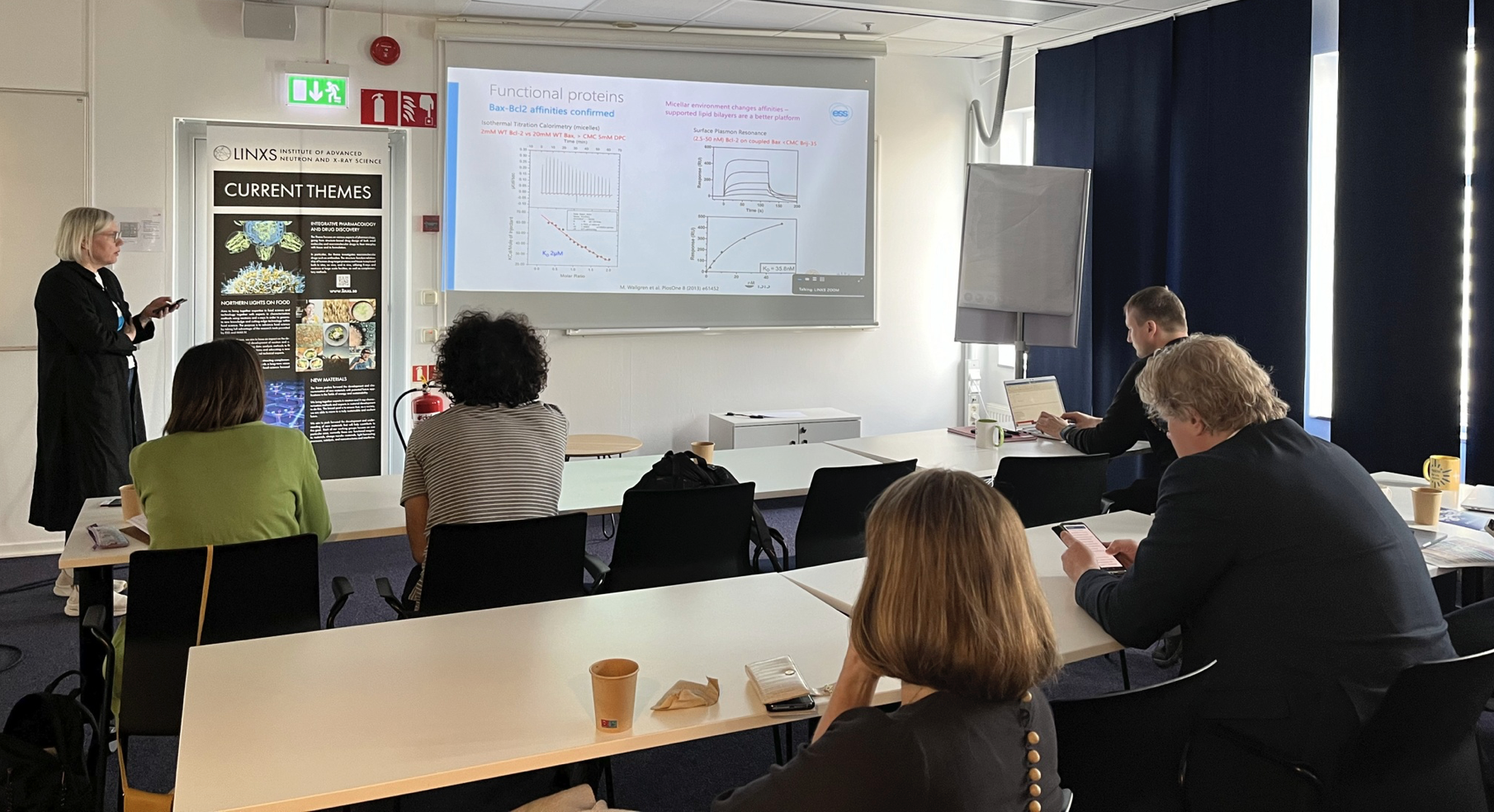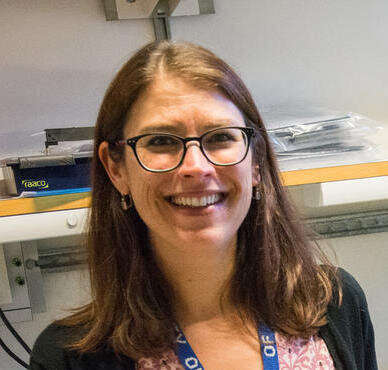Symposium on neutron scattering highlighted possibilities to advance drug discovery
Participants at the symposium on Neutron Scattering at LINXS.
The IPDD symposium on neutron scattering in May aimed to highlight ongoing research and possibilities with neutron scattering in drug design, discovery and formulation, and gathered around 25 researchers from Lund and Copenhagen as well as international speakers joining via zoom.
Organisers Raminta Venskutonytė from the Medical Faculty at Lund University, and Zoë Fisher from ESS, reflect on the outcomes of the event.
– The symposium provided good opportunities for participants to talk and network, with ample opportunities for in-depth conversations, says Raminta Venskutonytė, associate researcher at Medical Structural Biology, Lund University, and leader of the Structure-based Drug Design (SBDD) working group.
Raminta Venskutonytė is Assistant researcher at Medical Structural Biology, Lund University, and leader of the Structure-based Drug Design working group.
Neutron techniques can provide possibilities for drug discovery
She explains that the motivation for organising such a symposium is that neutron scattering techniques provide possibilities to study detailed drug-protein interactions and can as such give insight into crucial aspects of hydrogen positions – which cannot be resolved with only X-ray crystallography. Neutron scattering is also an important field in studying lipid systems, for example lipid nanoparticles used for drug delivery. To highlight all the different areas of neutron related techniques the symposium was organized as a joint event between the working groups of SBDD and Biophysics of Drug Delivery, headed by Vito Foderà.
Zoë Fisher is Senior Scientist for Chemistry and Life Science Support at ESS.
The two-day event also included a tour of the ESS, to emphasize the uses of neutron related techniques with a focus on drug design, discovery and formulation.
– Using neutron scattering techniques open for many new ways to forward drug development, but knowledge on how to use the technique is still quite low within the community, says Raminta Venskutonytė.
Zoë Fisher, Senior Scientist for Chemistry and Life Science Support at ESS, adds:
– Our aim was to focus on neutrons as an under-used but highly complementary technique within this field.
Great discussions during the day
Many questions arose during the day, centering on how users – in academia and in pharma – can access neutrons facilities; and what kinds of support there exists for users at neutron sources, for example general laboratories and access to deuteration. Participants were also interested in the requirements and challenges of doing a neutron scattering experiment, as well as eager to know when ESS will open for experiments.
– It was great to be able to highlight how neutrons fill an important gap in the drug discovery pipeline, and how they can be used as part of drug target validation, and drug discovery, shedding light on how ligands or drugs interact with their target. Finally, neutrons also have an application in optimizing drug formulation for efficient drug delivery, says Zoë Fisher.
Next steps
The symposium was organized as a follow up on earlier IPDD events, which have covered topics such as X-ray crystallography, medicinal and computational chemistry and to some extent Cryogenic electron microscopy (cryo-EM).
– We wanted to focus on neutrons in order to fully cover all the possibilities in drug design studies. We also saw this as a good opportunity to have a joint event with the Biophysics of drug delivery working group, as neutron scattering techniques are relevant in drug delivery as well, says Raminta Venskutonytė.
How would Raminta and Zoë like to build on the event?
– We want to continue to keep in mind neutron related drug research and studies for future events, so that we continue to highlight what you can do with neutrons. We also want to regularly update the science community on the development of ESS in order to build a strong user community once it opens, says Raminta Venskutonytė.
Zoë Fisher adds:
– ESS should continue to support IPDD events by attendance and offering to help with organising events. This is important for ESS to keep credibility and rase awareness in the user community.



